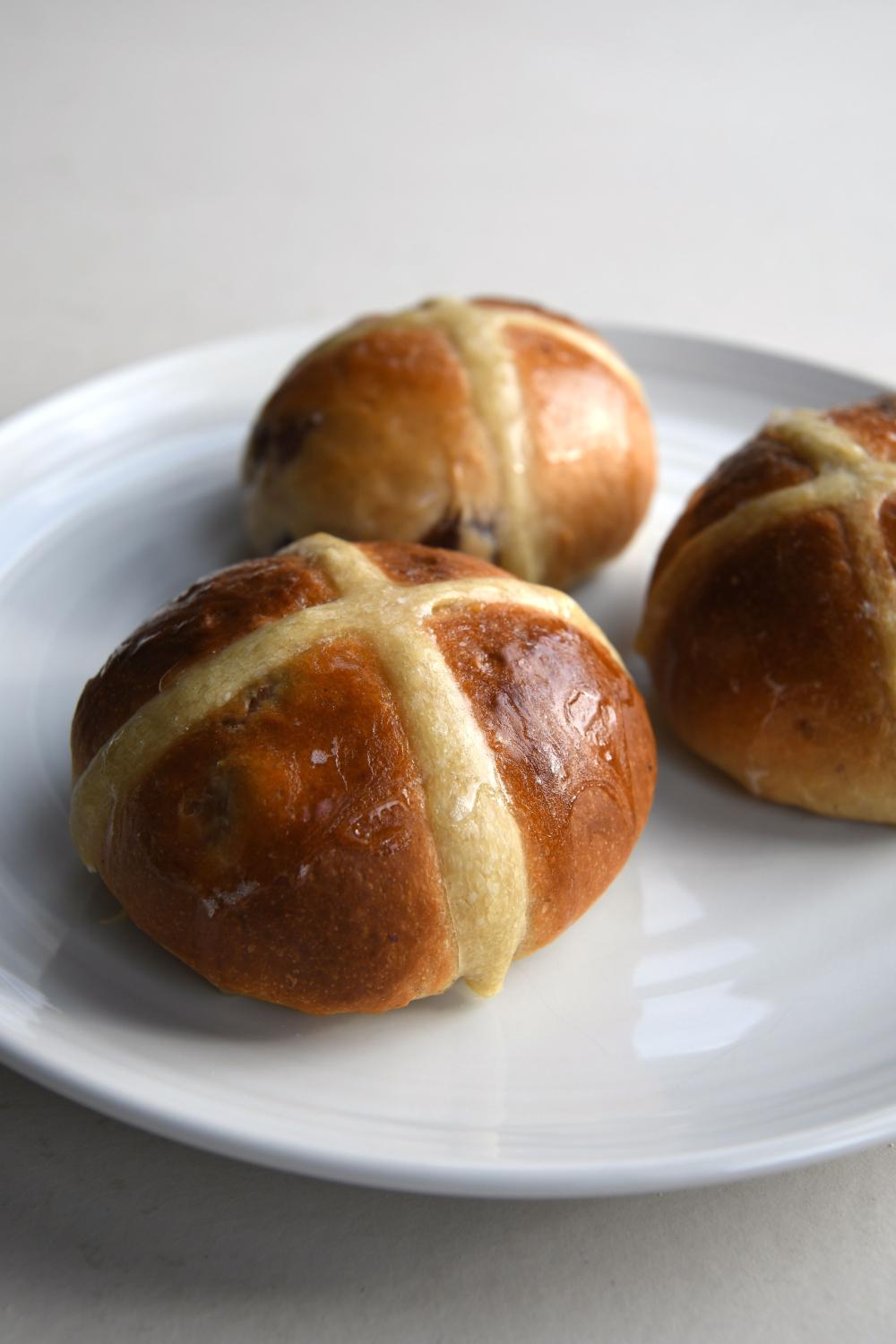Soak the currants and sultanas overnight in a bowl, with just enough water to cover them.
The next day, place 200g of your flour, the yeast and the milk in a large bowl and gently mix to a creamy batter. Stand it at room temperature for 45 minutes to an hour, stirring every 15 minutes or so, to make a “flying sponge”.
While your batter is resting, place the remaining flour, salt, mixed spice and sugar in a separate bowl.
Drain the fruit and place it with the mixed peel, orange and lemon zest, and mix it all together before leaving it to infuse.
When the flying sponge is ready (you will be able to tell because small bubbles will have formed on the surface and it will have expanded in size), pour it into the flour and sugar mix, and start to bring it gently together. If necessary, add the 2 extra tablespoons of milk. Once it has reached a rough dough, tip it onto a lightly floured work surface and start to develop the dough by kneading it until silky. When it is halfway through the development, add the butter and continue to work the dough until smooth and elastic. Place your dough back in the bowl and cover it with a clean tea towel or cloth. Let it rest at room temperature for around 30 minutes.
While your dough is resting, make the mix for the cross decorations. Place the flour for the crosses in a bowl, add the salt along with 60 ml of your water, and mix with a spoon until you have a smooth, lump-free consistency. Add the remainder of the water bit by bit until it has been fully incorporated. Using a hand whisk or electric hand whisk, beat it to a creamy batter and trickle in the oil. Cover it to prevent a skin from forming and leave to one side.
Tip the dried fruit into the dough and knead it in with your hands, so that it is evenly incorporated. Cover with a cloth and leave to rest for a further hour.
Once the dough has rested, cut it into 12 x 70-80g pieces and roll each into equally sized round balls. Line a baking tray with baking parchment and position the balls evenly across the tray, leaving a 5cm space between each. Cover and leave to prove at room temperature for 40 minutes, or until doubled in size.
Just before the end of your proving time preheat your oven to 220°C. Place your mixture for the crosses into a small piping bag fitted with a fine nozzle. When the buns are fully proved, pipe the crosses on to them just before placing them in the oven. Bake for 15-20 minutes until they are golden brown on top.
While your buns are baking, prepare the glaze. Place the sugar and water together in a small pan and bring gently to the boil, allowing the sugar to dissolve. Continue to boil, and remove from the heat just as the glaze starts to thicken (this should take around 5 minutes). As you take the buns out of the oven, brush them with your glaze using a pastry brush while they are still hot. Transfer to a wire rack to cool.
The hot cross buns will keep for toasting for up to 3 days if stored in an airtight container in a cool, dry place.


